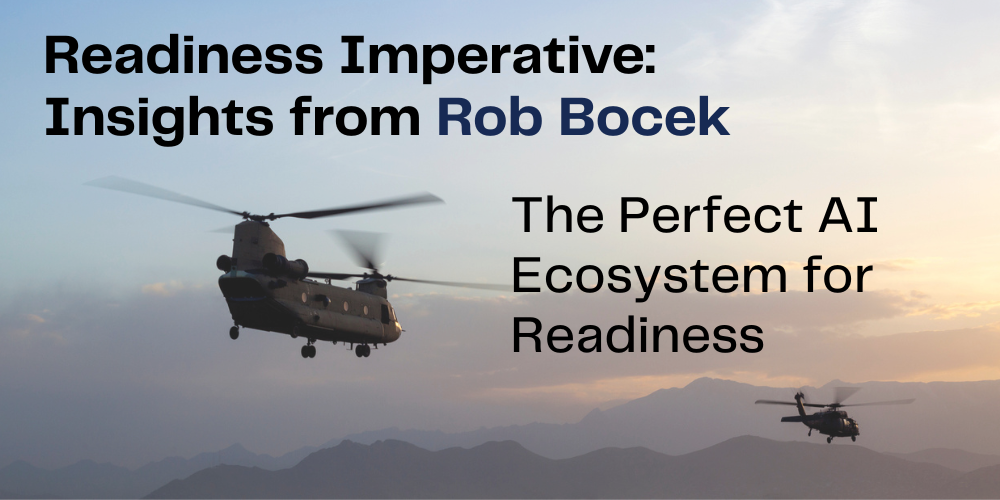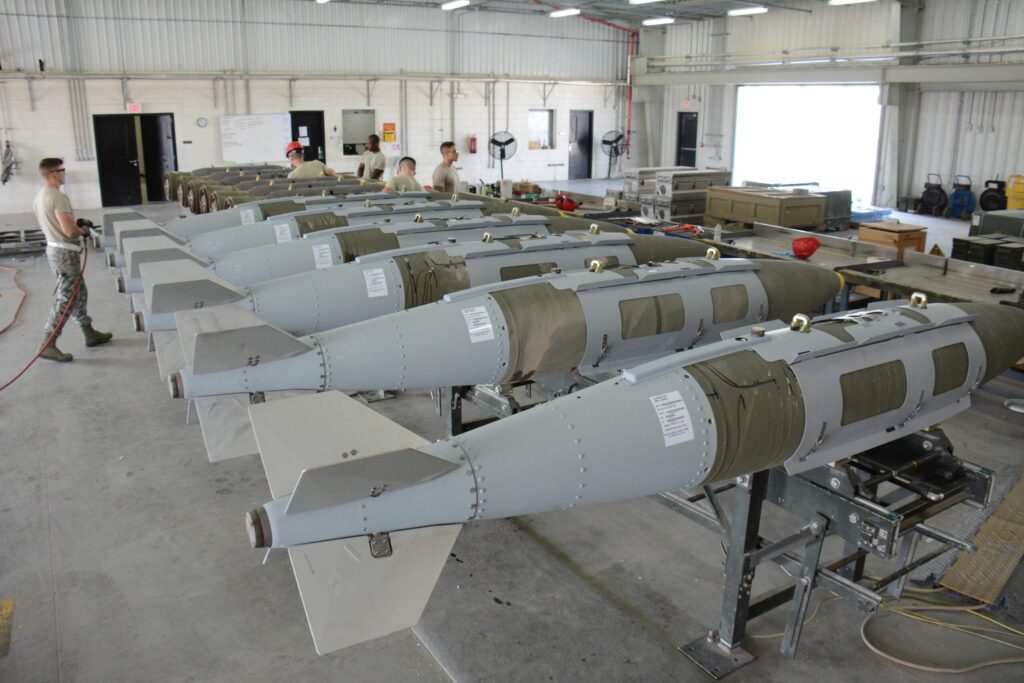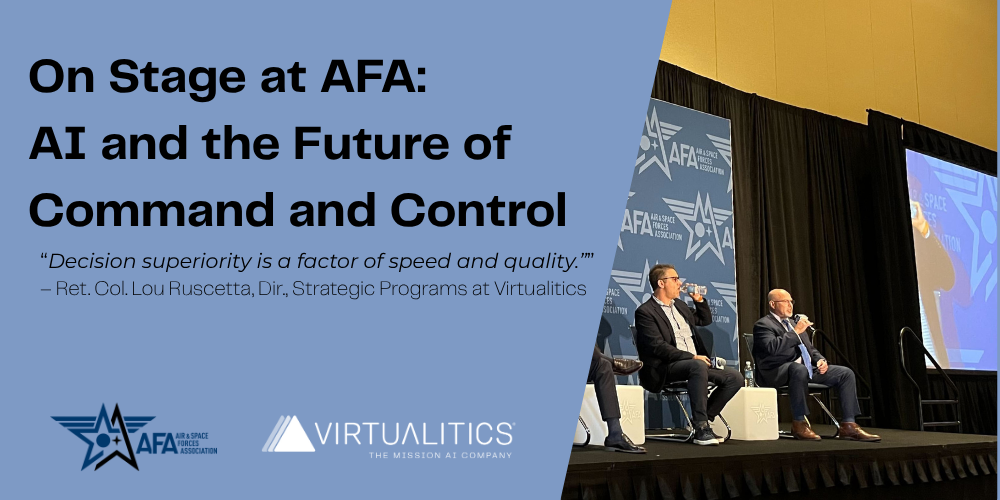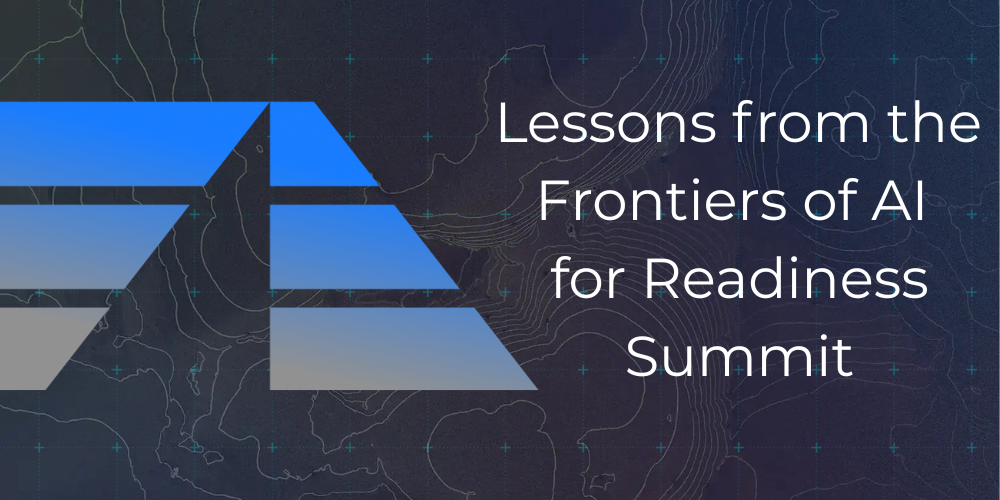I’ve spent most of my career in places where timely decisions and mission critical technologies mattered most—whether downrange leading SEAL teams in asymmetrical combat environments, building high-growth defense tech companies, or working national security imperatives. Now, leading strategy and strategic business initiatives at Virtualitics, I’m seeing a similar shift in how the Department of Defense and Federal Agencies approach their toughest challenges.
Last week, I was honored to join a panel at the Potomac Officers Club discussing the future of acquisition in government and defense specifically in the age of Artificial Intelligence. While a lot of these conversations can drift into buzzword bingo and wishful thinking, this summit was different. The room was aligned around one hard truth: it’s time to stop buying software outputs and start investing in mission outcomes.
The Cost of Waiting Is Too High
Let’s be clear—our adversaries aren’t waiting for us to figure this out. They’re moving at an unbridled pace. The cost of inaction in our space is measured in plummeting mission capable rates, asset unavailability, fractured & deteriorated workforces, gaps in subject matter expertise, degraded readiness and unnecessary risk to mission.
Venture Capital and Private Equity-backed defense tech startups breathe intensity around mission relevancy and speed. We’re calibrated in terms of hours and days, not fiscal quarters, years, and decades. Our culture is imbued with urgency on innovation and delivery speeds DOD & other Federal agencies are not typically used to. We live it firsthand working deep within various mission communities. Whether it’s aircraft stuck on the ground or ships delayed in dry dock, leaders seeking out bottle necks & degraders across their workforces, and identifying the impediments to surge capacity, AI proves highly impactful in many new arenas. Waiting years for top-down directives or perfect acquisition strategies won’t cut it. We need to move out smartly and solve the problems at the point of need – closest to the warfighter – not back-office IT or for headquarters echelon analysts.
At Virtualitics, that’s exactly what we’re doing. We develop AI applications for readiness – purpose built, designed for speed, scale, and trust. We’re putting decision intelligence in the hands of the warfighter so they can act decisively and with confidence.
Trust Requires Explainability
When you’re making high-stakes decisions, trust isn’t optional. But trust doesn’t just come from security certificates or compliance checkboxes—it comes from explainability and approachability with AI. AI technologies must be designed and built with an intuitive elegance not just as tools for data scientists and technologists, but for the mission community end users and decision makers.
One of the reasons we’ve built explainable AI into the core of Virtualitics is because we’ve lived in those moments where you need to understand why something is happening before you act. Commanders can’t roll the dice on black-box algorithms, nor remain solely reliant on their data scientists to surface insights hidden deep within the mission. They need ground truth, need it now, surfaced with insights they can defend and have complete confidence in.
It’s not just for the analysts and data scientists either. A few weeks ago, we got a message from one of our customers—a senior E-9 on the B-52 flight line. He had only been using our platform for two weeks. No data science background. But he was able to surface a hidden degrader in a critical component that could’ve led to a hard grounding condition. That’s the power of approachable, explainable AI. We’re retooling the force, starting with the operators closest to the mission.
We Can’t Buy AI Like It’s 2010
There’s another reality we need to face: AI isn’t traditional software and will be at the core of nearly everything we do in defense. We can’t buy it like we bought enterprise software technologies over the last decade. AI models and algorithms are evolving every few weeks, not every few years.
A nine-month procurement cycle doesn’t work when AI models and data pipelines need to adapt in days or weeks. If we want AI to deliver on its promise for mission readiness and decision advantage at scale, we need to rethink the acquisition process—and we need to do it now.
That means flexible funding between pathfinder to production. It means adaptive contracting strategies. It means a culture shift and sense of urgency permeating through the contracting organizations. And it means acquisition professionals locking arms with mission owners and industry from day one. This is a partnership, not a handoff.
We’ve Done This Before. We Can Do It Again.
This isn’t the first time the DOD has faced challenges that demand speed, scale, and innovation. National crises have been the catalyst for technological advancement & rapid insertion for many decades. In 1944, the United States outproduced the Japanese in aircraft production in a single year – building more aircraft in 12-months than the Japanese did throughout the entire war. During the early days of the Global War on Terrorism (GWOT), we fielded over 1000 Mine Resistant Ambush Protected (MRAP) vehicles in nearly six months— DOD unleashed five different variants at a screaming pace to support the demands of war and the Improvised Explosive Device (IED) threat; there wasn’t time to wait for a single perfect solution or single solution provider.
That same urgency exists today. Global competition is already on a wartime footing. The status quo isn’t going to get us where we need to be in time. Waiting for top-down directives and Enterprise level solutions for Artificial Intelligence is not acceptable.
The Path Forward Is Partnership
Virtualitics isn’t showing up with a platform and a slick demo. We’re sitting shoulder-to-shoulder with mission commanders, fleet sustainers, and weapons system operators to solve real problems. We bring the expertise, we train the teams, and we scale the solutions across the force.
We’ve seen firsthand how starting with a single use case—a Pathfinder effort—can open doors to strategic change. Our work with the US Air Force began with a simple readiness modeling effort during the pandemic to assess 2nd and 3rd order effects of quarantining mission critical personnel. That grew into broader applications for integrated readiness and holistic sustainment, munitions storage optimization, adaptive load planning, and well beyond that. Why? Because we focused on solving their problems, not selling our product.
This is the future of DoD AI: mission-first, explainable, and outcome-driven.
If you’re ready to move at the speed of mission, we’re ready too.






